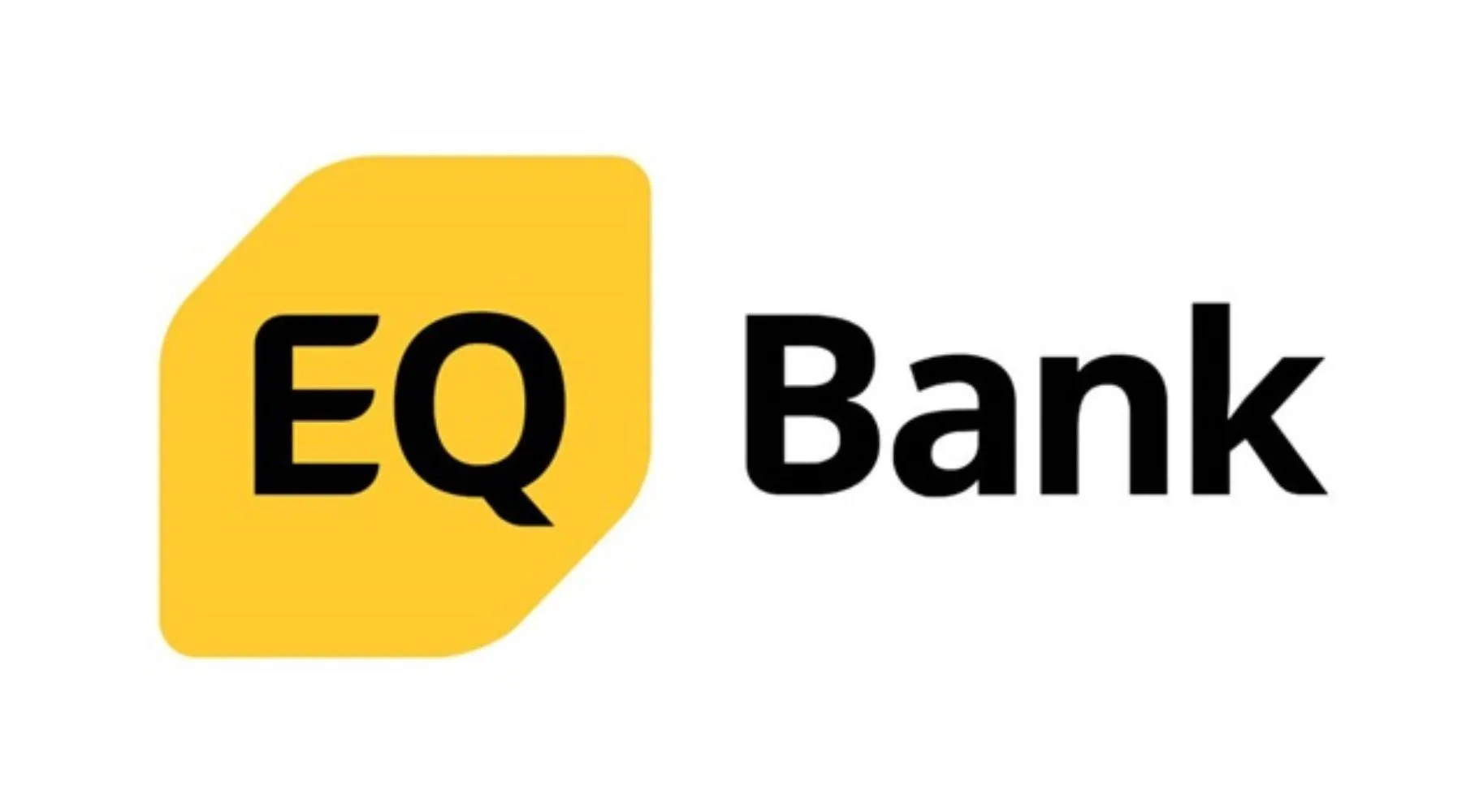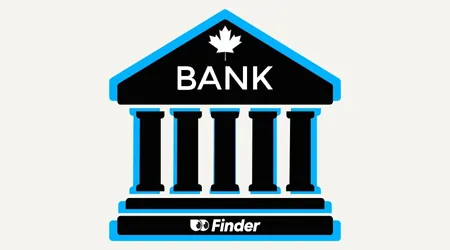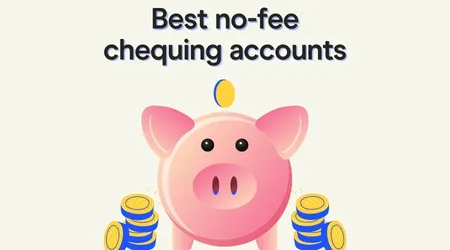Open an EQ Bank GIC
- Lock in a 3.5% interest rate on a 1 year GIC. To fund your high interest GIC, you’ll need to open an EQ Bank Savings Plus Account first.

GICs (guaranteed investment certificates) offer a low-risk way to grow your money. EQ Bank GICs come with terms ranging from 3 months to 10 years and provide a guaranteed rate of return on your investment.
So, if you’re searching for the best GIC interest rates, compare the latest EQ Bank GIC rates below.
| Term | Non-registered GIC | TFSA GIC | RSP GIC | FHSA GIC |
|---|---|---|---|---|
3 months | 2.75% | 2.75% | 2.75% | 2.75% |
6 months | 3% | 3% | 3% | 3% |
9 months | 3.05% | 3.05% | 3.05% | 3.05% |
1 year | 3.5% | 3.5% | 3.5% | 3.5% |
15 months | 3.5% | 3.5% | 3.5% | 3.5% |
2 years | 3.55% | 3.55% | 3.55% | 3.55% |
27 months | 3.55% | 3.55% | 3.55% | 3.55% |
3 years | 3.55% | 3.55% | 3.55% | 3.55% |
4 years | 3.55% | 3.55% | 3.55% | 3.55% |
5 years | 3.65% | 3.65% | 3.65% | 3.65% |
6 years | 2.6% | 2.6% | 2.6% | 2.6% |
7 years | 2.6% | 2.6% | 2.6% | 2.6% |
10 years | 2.6% | 2.6% | 2.6% | 2.6% |
EQ Bank offers short- and long-term GICs with terms ranging from 3 months to 10 years. GIC accounts can be either registered or non-registered.
If you want to take advantage of potential tax benefits with a registered GIC, you can choose from the following:
The best EQ Bank GIC rate currently available is 3.5% with a 1-year term or 3.5% with a 15-month non-registered GIC. You can also get the same rate with a 1-year or 15-month registered (TFSA, RSP or FHSA) GIC form EQ Bank.
When you invest in an EQ Bank GIC, you agree to deposit money for a predetermined period. In return, EQ Bank pays a specific rate of interest on your investment. When the term ends, you also get back the initial amount you deposited.
There are many different types of GICs on the market, but EQ Bank GICs are non-redeemable. This means that your funds are locked in and you will not be able to access the money until the GIC matures.
GICs from EQ Bank pay a fixed interest rate that depends on the term length. You can buy a maximum of 20 certificates per customer, the maximum you can deposit per GIC is $100,000 and the maximum aggregate amount you can invest in EQ Bank GICs is $500,000.
No, EQ Bank GICs are non-redeemable. This means that once you open a GIC and the one-day cancellation period has passed, you can’t access your money until the end of the GIC term.
The funds in your EQ Bank GIC cannot be accessed before the GIC reaches its maturity date. So if you want to be able to have instant access to your savings in case of an unexpected financial emergency, you may want to consider a high interest savings account instead.
Yes. The minimum amount you can invest in an EQ Bank GIC is $100. Many banks have a minimum GIC investment requirement of $500, making EQ Bank GICs easier to access for people who are just starting their savings journey.
Yes, EQ Bank does offer TFSA GICs. Unlike a regular GIC, you don’t have to pay tax on the interest you earn from a TFSA GIC.
EQ Bank offers TFSA GICs with terms ranging from 3 months to 10 years and interest rates ranging from 2.6% to 3.5%, depending on the length of the term. The minimum deposit amount is $100.
While avoiding tax on your GIC interest is a solid perk, the downside of a EQ Bank TFSA GIC is that annual TFSA contribution limits will appl. That means there are restrictions on how much you can invest in your TFSA GIC per year.
You can learn more about how tax-free savings accounts work in our full TFSA guide here.
The 1-year rate for an EQ Bank GIC is currently 3.5%. You can get this rate whether you open for a non-registered, TFSA, RSP or FHSA account.
| Interest rate | 3.5% |
|---|---|
| Term | 1 year |
| Min. Investment | $100 |
| Min. Deposit to open | $100 |
EQ Bank GICs accrue interest for the entire term, but the way it works depends on the length of the term.
For example, if the term is less than 1 year, the terms and conditions state that simple interest is calculated on a per diem basis and paid at maturity.
But if the term is over 1 year (except for 15- and 27-month terms), interest is calculated on a per annum basis and then paid either annually (simple interest) or at maturity (interest compounded annually).
The term you choose also affects the rate you get. EQ Bank’s highest rate (3%) is available with 6-month and 9-month GICs, while the lowest (2.6%) is available on 6-, 7- and 10-year GICs.
EQ Bank GIC rates have fluctuated quite a bit in the past few years. Over the last several years, rates have climbed steadily from 1.30% in July 2021 to October 2023, where we saw a rate of 5.75%. Rates have fallen slightly since then.
There are two main factors to consider when choosing an EQ Bank GIC:
Think about your investment timeframe. How long are you comfortable locking away your money? Will you have enough savings to cover any financial emergencies that occur before your GIC matures? Do you have a specific savings goal in mind?
Once you have a goal in mind, compare EQ Bank GIC rates across different terms to find the highest available rate. For example, while you may be considering investing in a 2-year GIC at 3.55%, you may decide that earning 3.5% interest on a 1-year GIC makes it a better choice.
You can invest in an EQ Bank GIC by completing the following steps:
EQ Bank doesn’t offer the same full range of products and services as a Big Five bank, but it does offer a variety of accounts and investments. Two of its most popular offerings are the EQ Bank Personal Account and the Notice Savings Account.
| Min. Age | 18 |
|---|---|
| Account Fee | $0 |
| Min. Age | N/A |
|---|---|
| Account Fee | $0 |
| Transaction Fee | $0 |
| Interac e-Transfer Fee | unavailable |
EQ Bank also offers the following products and services:
EQ Bank GIC rates are quite competitive and tend to be higher than those offered by the Big Five banks. However, it’s important to shop around to see how EQ Bank’s rates compare with those offered by other financial institutions.
For example, EQ Bank’s 1-year non-registered GIC rate of 3.5% is higher than what’s available from major banks, which usually range from 3.40% to 3.75%. But higher rates are available from other providers, such as:
EQ Bank is well worth checking out if you’re searching for safe and secure GIC investments. It offers competitive rates, terms to suit a wide range of investment timeframes, CDIC insurance coverage and an easy online application process. Compare EQ Bank GICs with GICs from a wide range of other banks before deciding where to invest your money.

Explore key banking statistics and figures from the Finder: Consumer Sentiment Survey January 2025.
Read more…
Compare the features of 8 of the best no-fee chequing accounts in Canada, and find out how to avoid transaction fees.
Read more…
Earn cash, rewards points, bonus interest rates and more with these new bank account offers and promotions.
Read more…
Learn about the different types of bank accounts for your teenager and how to choose the right one.
Read more…
Compare chequing accounts and learn about our top picks. Compare different features and see which one is right for you.
Read more…
Compare and open a bank account online in Canada in as little as 5 minutes. Learn what you need to apply and how to get started today.
Read more…GIC laddering lets you enjoy guaranteed returns without locking in your funds for the long-term.
Is a Simplii GIC right for you? Explore Simplii GIC rates, terms, advantages and drawbacks in our review.
Looking for a low-risk investment? Get competitive rates and a guaranteed return with a TD GIC.
A Scotiabank GIC offers a low-risk way to save—especially if you already have a premium Scotia account.
Compare GICs and bonds to learn which investment is the best fit for your financial situation.
We compare GICs and TFSAs to help you find the best fit for your investment goals.
We explore RBC GIC rates and break down the pros & cons of this low-risk investment.
Compare GICs and mutual funds to find out which investment is the best fit for you.
Looking for a low-risk, tax-free way to grow your money for retirement? Find out how an RRSP GIC works.